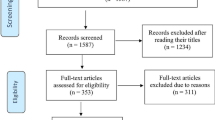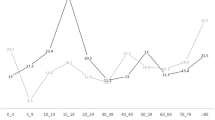Abstract
Objective
To evaluate the diagnostic accuracy of a new diagnostic instrument for epilepsy — INCLEN Diagnostic Tool for Epilepsy (INDT-EPI) — with evaluation by expert pediatric neurologists.
Study design
Evaluation of diagnostic test.
Setting
Tertiary care pediatric referral centers in India.
Methods
Children aged 2–9 years, enrolled by systematic random sampling at pediatric neurology out-patient clinics of three tertiary care centers were independently evaluated in a blinded manner by primary care physicians trained to administer the test, and by teams of two pediatric neurologists.
Outcomes
A 13-item questionnaire administered by trained primary care physicians (candidate test) and comprehensive subject evaluation by pediatric neurologists (gold standard).
Results
There were 240 children with epilepsy and 274 without epilepsy. The candidate test for epilepsy had sensitivity and specificity of 85.8% and 95.3%; positive and negative predictive values of 94.0% and 88.5%; and positive and negative likelihood ratios of 18.25 and 0.15, respectively.
Conclusion
The INDT-EPI has high validity to identify children with epilepsy when used by primary care physicians.
Similar content being viewed by others
References
Mani KS, Rangan G, Srinivas HV, Kalyanasundaram S, Narendran S, Reddy AK. The yelandur study: A community-based approach to epilepsy in rural south India-epidemiological aspects. Seizure. 1998;7:281–8.
Koul R, Razdan S, Motta A. Prevalence and pattern of epilepsy (Lath/Mirgi/Laran) in rural Kashmir, India. Epilepsia. 1988; 29:116–22.
Radhakrishnan K, Pandian JD, Santhoshkumar T, Thomas SV, Deetha TD, Sarma PS, et al. Prevalence, knowledge, attitude, and practice of epilepsy in Kerala, south India. Epilepsia. 2000; 41:1027–35.
Sridharan R, Murthy BN. Prevalence and pattern of epilepsy in India. Epilepsia. 1999; 40:631–6.
Gu L, Liang B, Chen Q, Long J, Xie J, Wu G, et al. Prevalence of epilepsy in the People’s Republic of China: a systematic review. Epilepsy Res. 2013;105:195–205.
Malik MA, Akram RM, Tarar MA, Sultan A. Childhood epilepsy. J Coll Physicians Surg Pak. 2011; 21:74–8.
Benamer HT, Grosset DG. A systematic review of the epidemiology of epilepsy in Arab countries. Epilepsia. 2009; 50:2301–4.
Somoza MJ, Forlenza RH, Brussino M, Centurión E. Epidemiological survey of epilepsy in the special school population in the city of Buenos Aires. A comparison with mainstream schools. Neuroepidemiology. 2009; 32:129–35.
Calisir N, Bora I, Irgil E, Boz M. Prevalence of epilepsy in Bursa city center, an urban area of Turkey. Epilepsia. 2006; 47:1691–9.
Chadwick D, Smith D. The misdiagnosis of epilepsy. BMJ. 2002; 324:495–6.
Chinthapalli RN. Who should take care of children with epilepsy? BMJ. 2003; 327:1413.
Cockerell OC, Hart YM, Sander JW, Shorvon SD. The cost of epilepsy in the United Kingdom: an estimation based on the results of two population-based studies. Epilepsy Res. 1994; 18:249–60.
Uldall P, Alving J, Hansen LK, Kibaek M, Buchholt J. The misdiagnosis of epilepsy in children admitted to a tertiary epilepsy centre with paroxysmal events. Arch Dis Child 2006;91:219–21.
Stroink H, van Donselaar CA, Geerts AT, Peters ACB, Brouwer OF, Arts WFM. The accuracy of the diagnosis of paroxysmal events in children. Neurology. 2003; 60:979–82.
Krishnamoorthy ES, Satishchandra P, Sander JW. Research in epilepsy: development priorities for developing nations. Epilepsia. 2003; 44 Suppl 1:5–8.
Carpio A, Hauser WA. Epilepsy in the developing world. Curr Neurol Neurosci Rep. 2009; 9:319–26.
ILAE Commission Report. The epidemiology of the epilepsies: future directions. Epilepsia. 1997; 38:614–8.
Placencia M, Sander JW, Shorvon SD, Ellison RH, Cascante SM. Validation of a screening questionnaire for the detection of epileptic seizures in epidemiological studies. Br J Neurol. 1992; 115:783–94.
Bharucha NE, Bharucha EP, Bharucha AE, Bhise AV, Schoenberg BS. Prevalence of epilepsy in the Parsi community of Bombay. Epilepsia. 1988; 29:111–5.
Gourie-Devi M, Gururaj G, Satishchandra P, Subbakrishna DK. Neuro-epidemiological pilot survey of an urban population in a developing country. A study in Bangalore, south India. Neuroepidemiology. 1996; 15:313–20.
Osuntokun BO, Adeuja AO, Nottidge VA, Bademosi O, Olumide A, Ige O, et al. Prevalence of the epilepsies in Nigerian Africans: a community-based study. Epilepsia. 1987; 28:272–9.
Anand K, Jain S, Paul E, Srivastava A, Sahariah SA, Kapoor SK. Development of a validated clinical case definition of generalized tonic-clonic seizures for use by community-based health care providers. Epilepsia. 2005; 46:743–50.
Das SK, Biswas A, Roy T, Banerjee TK, Mukherjee CS, Raut DK, et al. A random sample survey for prevalence of major neurological disorders in Kolkata. Indian J Med Res. 2006; 124:163–72.
Banerjee TK, Ray BK, Das SK, Hazra A, Ghosal MK, Chaudhuri A, et al. A longitudinal study of epilepsy in Kolkata, India. Epilepsia. 2010; 51:2384–91.
Beghi E, Carpio A, Forsgren L, Hesdorffer DC, Malmgren K, Sander JW, et al. Recommendation for a definition of acute symptomatic seizure. Epilepsia. 2010; 51:671–5.
Author information
Authors and Affiliations
Consortia
Corresponding author
Additional information
INCLEN Study Group: Core Group: Alok Thakkar, Arun Singh, Gautam Bir Singh, Manju Mehta, Manoja K Das, Monica Juneja, Nandita Babu, Paul SS Russell, Poma Tudu, Praveen Suman, Rajesh Sagar, Rohit Saxena, Savita Sapra, Sharmila Mukherjee, Sunanda K Reddy, Tanuj Dada, Vinod Bhutani. Extended Group: AK Niswade, Archisman Mohapatra, Arti Maria, Atul Prasad, BC Das, Bhadresh Vyas, GVS Murthy, Gourie M Devi, Harikumaran Nair, JC Gupta, KK Handa, Leena Sumaraj, Madhuri Kulkarni, Muneer Masoodi, Poonam Natrajan, Rashmi Kumar, Rashna Dass, Rema Devi, Sandeep Bavdekar, Santosh Mohanty, Saradha Suresh, Shobha Sharma, Sujatha S Thyagu, Sunil Karande, TD Sharma, Vinod Aggarwal, Zia Chaudhuri.
Rights and permissions
About this article
Cite this article
Konanki, R., Mishra, D., Gulati, S. et al. INCLEN diagnostic tool for epilepsy (INDT-EPI) for primary care physicians: Development and validation. Indian Pediatr 51, 539–543 (2014). https://doi.org/10.1007/s13312-014-0443-7
Received:
Revised:
Accepted:
Published:
Issue Date:
DOI: https://doi.org/10.1007/s13312-014-0443-7




